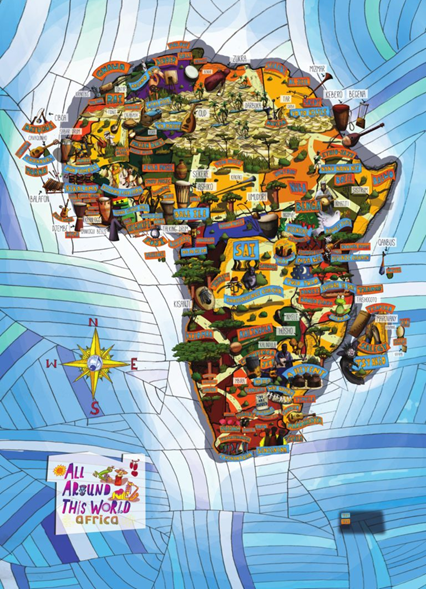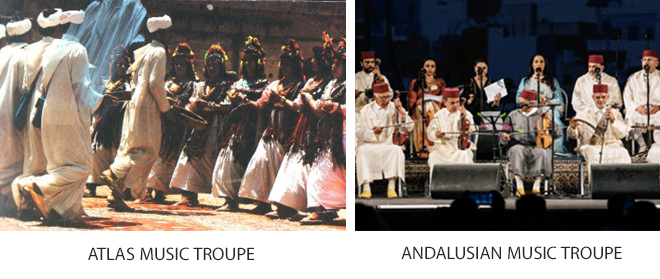In addition to the masks, the dances and songs that often accompany them have given sub-Saharan Africa its own identity. With a thousand ethnic groups and a billion inhabitants, Africa is culturally diverse, but African music and dance share some distinctive features. In traditional culture, music, dance, and the display of masks often form a triptych. The music is essentially rhythmic and focused on oral transmission, hence the great importance of the text. The instruments are very diverse, but the rhythm gives pride of place to percussion, particularly drums.
Despite a sometimes traumatic encounter between African and Western cultures, Africa has influenced certain Western music, such as jazz, which was directly inspired by the rhythms of West Africa and created by black slaves deported to America. Other examples include Afrobeat (1970s), created by Fela Kuti, and Highlife (1920s). Africa’s own music from the contemporary era, such as Congolese rumba, soukous, and coupé-décalé, was exported throughout the world from the 1960s, and even more so with the cross-breeding of world music, as seen in Paul Simon’s 1986 album Graceland. “Negro art has inspired Picasso and other artists; and the syncopated rhythms of African music and dance resonate around the world today.”
North Africa, for its part, mainly offers Berber music, an extension of the culture of the first Libyan inhabitants, followed by Arab-Andalusian music.
For more information :
- https://fr.wikipedia.org/wiki/Portail:Afrique
- https://en.wikipedia.org/wiki/Africa
- https://africacenter.org/
- https://journals.openedition.org/etudesafricaines/
- https://etudes-africaines.cnrs.fr/
- https://journals.openedition.org/etudesafricaines/
- https://www.afdb.org/fr/documents-publications/economic-perspectives-en-afrique-2024


